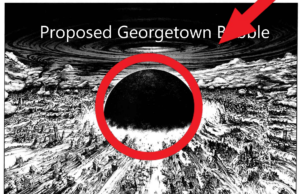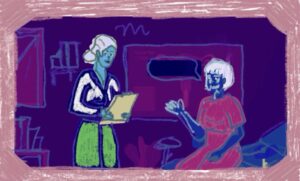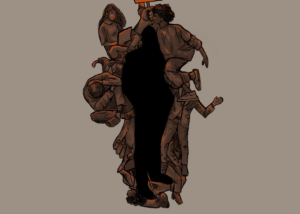Early Saturday morning, residents of Harbin Hall woke to the sounds of Department of Public Safety and Metropolitan Police Department officers shouting and pounding on their doors. Authorities had found a dimethyltryptamine lab, which contained several highly flammable and explosive chemicals needed to produce the illegal drug, in a room on the ninth floor. No alarms had sounded when officers tried to activate the building’s fire alarms, so officers had no choice but to knock on more than two hundred individual doors on nine floors to ensure that students and staff were safely out of the building.
Georgetown must ensure that its existing emergency systems function in crisis. “Redundant means of evacuation” may not be enough to ensure students’ safety during the next emergency. Malfunctioning fire alarms are a serious threat to student safety. Students living in residence halls are especially susceptible to fire-related emergencies because of the close proximity of living quarters. According to Todd Olson, Vice President for Student Affairs, Harbin’s fire alarm passed inspection the week before Saturday’s emergency and has since passed inspection again—but that news is cold comfort since University officials have also admitted that the fire alarm’s “audible portion” did not function on Saturday. The University should investigate, find, and correct the source of the malfunction immediately. Georgetown must also look at why inspections did not detect the glitch.
The University also made a critical misstep by not using the HOYAlert system to relay information to Georgetown students. Early rumors suggested the lab was producing methamphetamine, a more volatile and dangerous drug than DMT. These views persisted for hours because there were no official communications from the University until seven hours after the evacuation took place. Instead, students relied on other news sources for information, which was often inaccurate. MPD officers added to the confusion by allowing students to re-enter the building before it was deemed safe by the Drug Enforcement Administration. The University should have communicated with its students much sooner to prevent the atmosphere of panic and confusion that spread across Georgetown’s campus on Saturday.
The University needs to clearly define what steps it will take to make certain the chaos of last Saturday’s events does not accompany the next emergency. Better testing and planning, not an actual emergency, should be what reveals defects and mistakes in Georgetown’s emergency systems.





DMT is the shit. sofuck you
DMT is not dangerous, but methamphetamine certainly is. To even hint that the “dangers” between the two are comparable is irresponsible journalism. Even DMT’s production is not very dangerous. The title of this article should, at the very least, have “DMT” replaced with “methamphetamine,” if they were in fact producing the latter.
“dimethyltryptamine lab, which contained several highly flammable and explosive chemicals needed to produce the illegal drug…”
There is just such ignorance in this statement I couldn’t resist commenting. As someone who has used DMT recreationally and knows a friend who produces small amounts, I must say this statement is complete bullshit. A “DMT lab” consists of the following:
Mimosa hostilis root-bark,Muratic acid,pH papers, Lye,Naphtha,Coffee filters and cotton swabs/cloth,Funnel,3 labeled glass jars with lids,Evaporating dish,Glass pipette,Goggles and gloves,Distilled water
This is a method used to extract DMT from the mimosa hostilis root bark through repeated freezing (to destroy the cell wall) and repeated drastic PH changes until eventually DMT is crystallized. Every chemical on this list can be bought at a local store. Thank you, extremely ignorant media. Even a college paper has to stoop this low, how sad.
Re: Mark Matthews, Noah
the phrase “highly flammable and explosive chemicals” was taken directly from a court affidavit issued by investigators in the case.
Here is the link to the Washington Post article where it was cited, the statement can be found in the seventh paragraph:
http://www.washingtonpost.com/wp-dyn/content/article/2010/10/27/AR2010102707596.html
-Hunter Kaplan
Georgetown Voice Editorial Board Chair